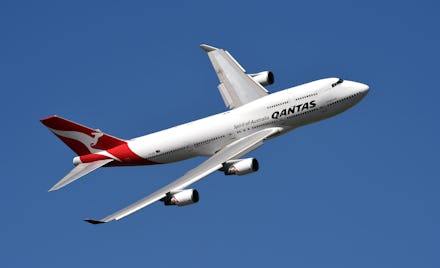Here's the Science Behind How You Can Breathe on a Plane and Not Suffocate at 30,000 Feet

When you're flying on a commercial flight, you're likely cruising at tens of thousands of feet above the ground. Up that high, the air is too thin to breathe — so how is it possible that we can breathe comfortably for hours as we nap, snack and watch movies while we hurtle majestically through the skies? A recent Discovery video explains the science of breathable air existing inside an airplane.
The problem with altitude, essentially, is that there is less pressure as you travel higher. And when there's less pressure, the oxygen molecules spread out, making it hard for us lowly humans to suck in as much as we need to survive. Airplanes solve this with pressurized cabins. The jet engines pull in air from around the plane, compressing and heating as part of the process that thrusts the plane forward.
The compression also makes the air more breathable for us, because it squeezes the oxygen molecules together. But we aren't breathing in air that comes straight out of the jet engines — that would be painful because the air is so hot.
The compressed air has to be cooled before it can enter the airplane cabin, where it's mixed in with the air that's already in there. And to keep pressure in the cabin at a stable level, some old air from inside has to be released. So if you sneeze at 30,000 feet, your boogers could soon be flying through the air outside the plane. Maybe.
Read: Here's Why You Should Sleep Naked, According to Science
h/t: Discovery